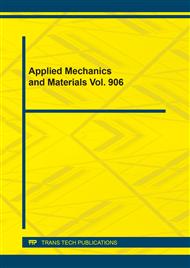p.1
p.23
p.33
p.41
p.59
p.67
p.75
p.81
p.87
Numerical Simulation and Experimental Verification of Phase Change Buoyancy Control System
Abstract:
Phase change buoyancy control systems (PBCS) driven by phase change materials have unique advantages over conventional hydraulically actuated buoyancy control systems, especially in their high adaptability for deep-sea exploration and seamless interaction with humans. Studying the heat transfer process and working mechanism of PBCS is helpful to research the precise control mode of the phase change buoyancy regulation system. In this study, we chose paraffin wax as the phase change material for PBCS. A buoyancy generator for phase change buoyancy regulation is designed and manufactured. By studying the relation between its expansion volume and heating time and heat input, the mathematical model of the volume change of PBCS is established. We obtain the calculation results of the PBCS working process by using the computer-aided software MATLAB. Experimental results show that the theoretical volume expansion velocity and volume expansion rate of paraffin are almost consistent with the experimental results. The mathematical calculation model is available and has a significant reference value for further research on the theoretical basis of the diving depth control of PBCS.
Info:
Periodical:
Pages:
59-66
Citation:
Online since:
April 2022
Authors:
Keywords:
Price:
Сopyright:
© 2022 Trans Tech Publications Ltd. All Rights Reserved
Share:
Citation:


